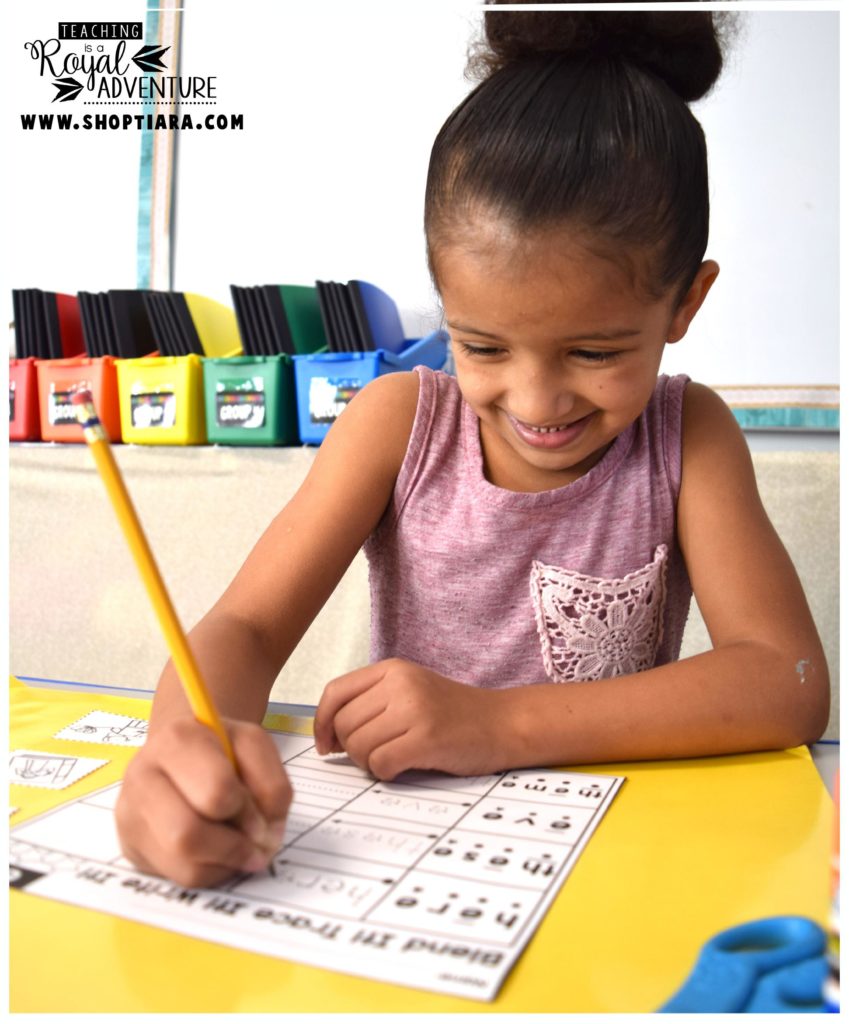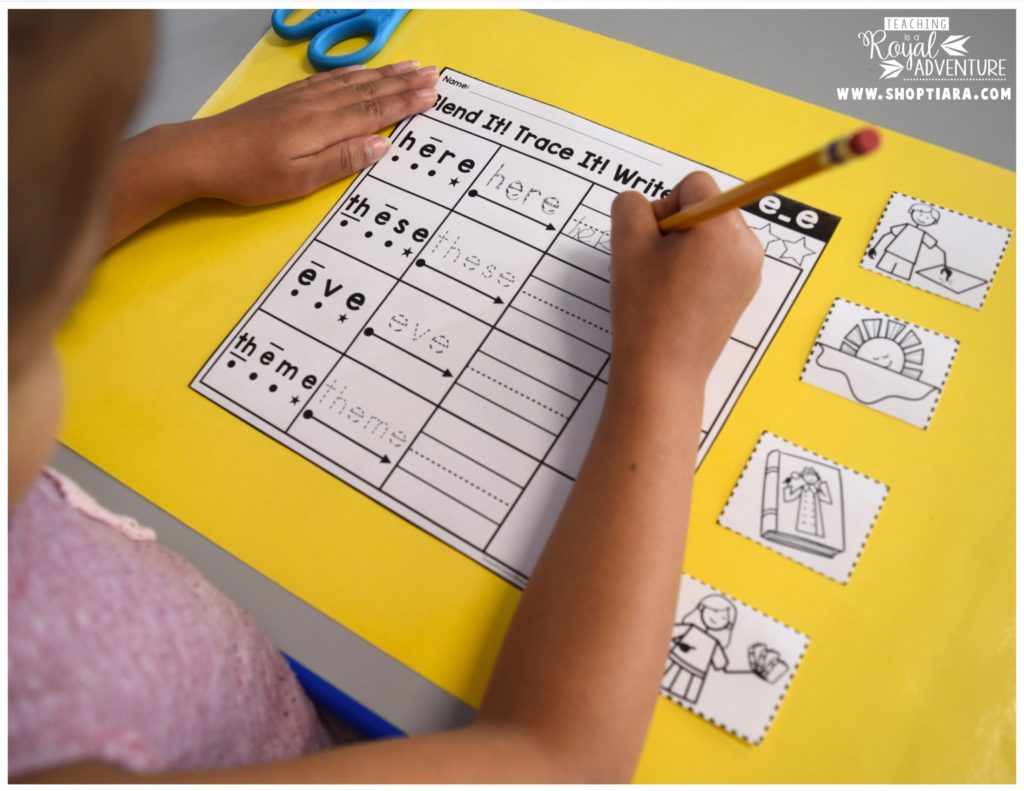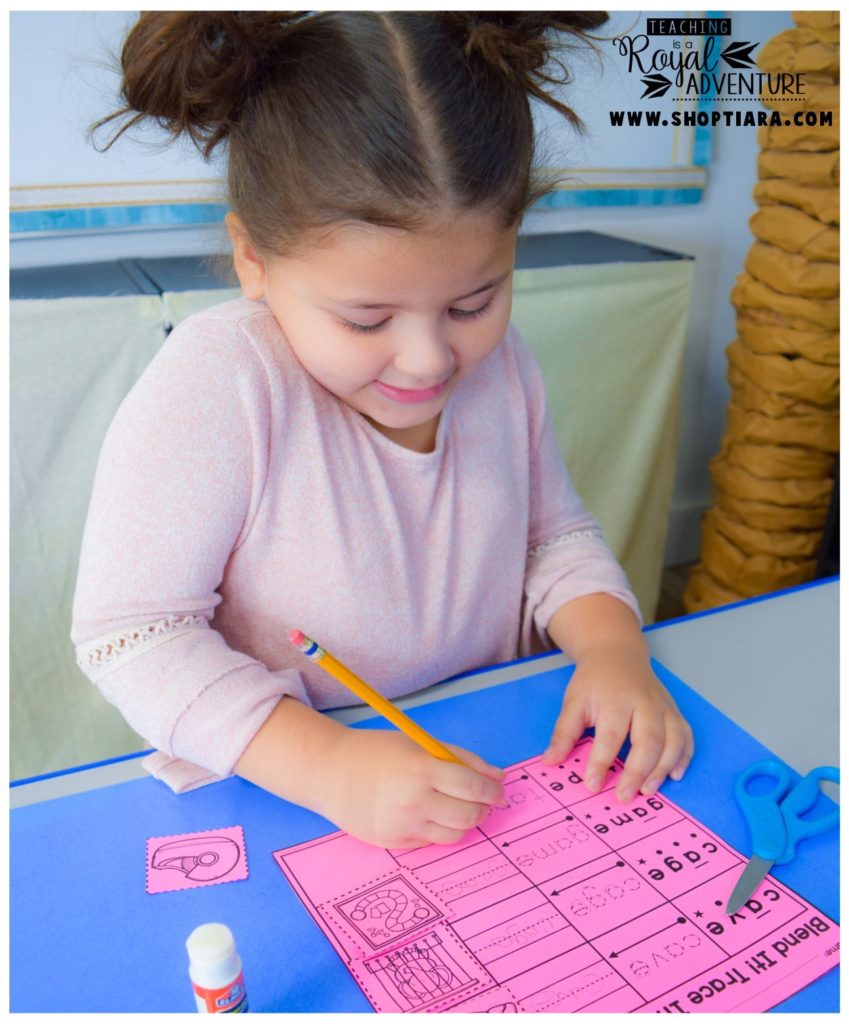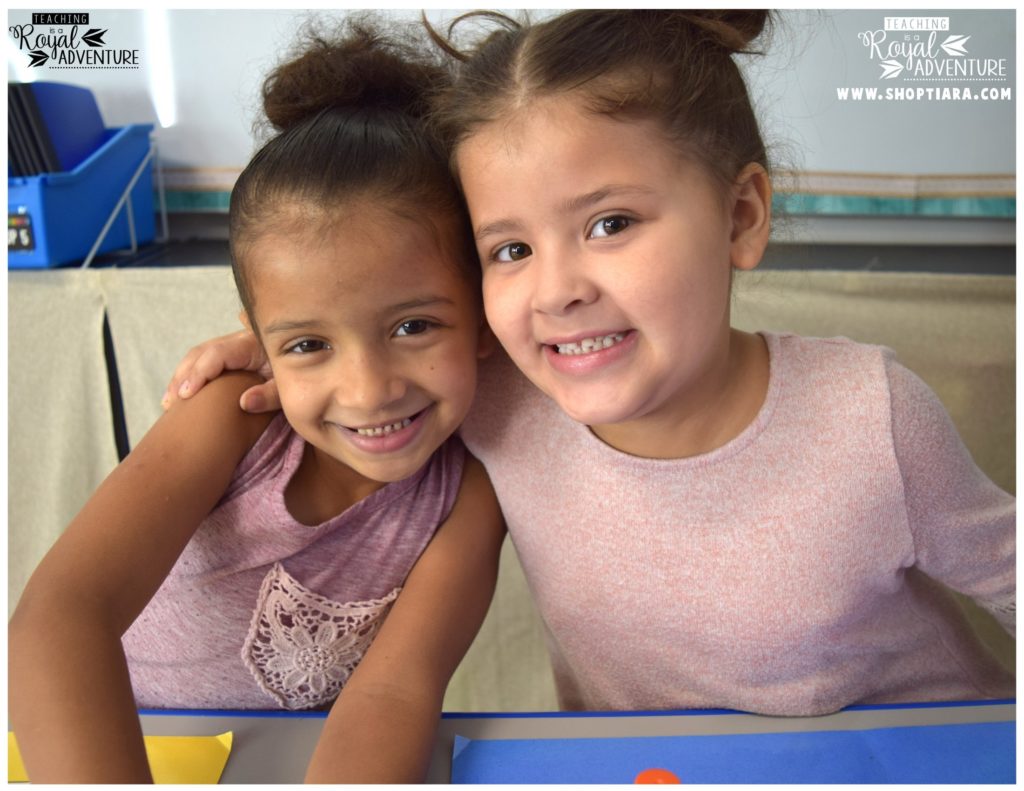It’s absolutely thrilling when we see our youngest learners growing a firm understanding of letter-sound correspondence. As soon as this skill is grasped, students are DELIGHTED to start applying their knowledge to words they encounter. Soon, students start coming across words that don’t follow the few rules they know so far. If /o/ is followed by an /e/, all of a sudden it’s a long /o/ instead of a short /o/. When /a/ and /r/ are together in a word, /a/makes a totally different sound than they’ve ever heard! Decoding becomes trickier as students realize that many, many words require knowledge of various spelling patterns.
This blending bundle is perfect for helping students apply new rules they are learning by practicing phonics, writing, fluency, AND vocabulary skills. The combination of activities on each page will engage students, whether they are auditory, visual, OR kinesthetic learners. One hundred twenty-five skills are covered throughout the bundle so that they can be used for intervention, extension, and review. A phonics bundle that can do all that is a gem in your classroom.

- Do You Need This Bundle?
- Do your students have gaps in phonics knowledge from the back and forth of the last school year?
- Are you looking for a way to differentiate your reading rotations or intervention without tons of extra prep work?
- Do you need a methodical, systematic way to reinforce phonics skills with your students?
We’ve got you covered.

Whether you’re teaching kindergarten, first grade, second grade, special education, ESL, intervention, or homeschool, the Blend It! Trace It! Write It! bundle has activities that your students will enjoy learning from. The consistent design of the blending boards makes it easy for students to quickly learn how to work independently, something every adult values in a classroom or homeschool activity. The methodical work makes this activity extra precious in a special education or ESL classroom.

Each blending board encourages mastery of the skill in several ways. The blending portion is designed to provide visual cues for students, keeping any blended letters together to remind students they make one sound. All four portions require interaction: cueing students when to point and blend, having students write the word, and then matching the word to a picture by cutting and gluing.
Using the Bundle: Scope and Sequence
Based on the strategies and skills sequence recommended by Jan Richardson, we recommend using the bundle in this order:
- Short vowel word families (in order of a, o, e, i ,u)
- Initial, then final digraphs
- Initial, then final blends
- Long vowels with a ‘magic e’
- Long vowels with a vowel team
- R-controlled vowels
- Diphthongs
If your school uses a specific reading curriculum, we know that many reading curriculums teach phonics skills in a very specific order. Because this bundle targets 125 different skills, there’s probably an activity for just about every skill you’ll be teaching. Find the blending board that corresponds with your weekly skill, and you’re good to go!

Decoding skills are invaluable but do not work best in isolation. These blending boards are an incredible tool for practicing phonics skills, but we know there is more to preparing students to apply their new skills. Once students have mastered the phonics skill, provide a decodable reading passage that includes the targeted skill throughout the text. One of the best ways to utilize the bundle is to use the blending boards as a reading rotation activity and use a corresponding decodable reader at your teacher rotation. Not only are you reinforcing the phonics skill, but this provides an opportunity to assess which students need further instruction to grasp and apply the skill.
Engage Your Students!
- Offer colored pointers or witch fingers for an extra bit of fun when students are blending.
- If blending boards are used at a center, consider including special colored markers to make the Write It! portion extra exciting.
- If your students are learning cursive, consider allowing them to write each word twice: once in print and once in cursive.
- If printing out a blending board for every student each week isn’t in your monthly copy allowance, put a few copies in a dry-erase sleeve for a center and just have students draw lines to match their words and pictures.
- Dry-erase sleeves can also be handy for those students who need some extra handwriting practice. They can write each word multiple times with their dry-erase marker.
- Create an extension by challenging students to create their own Blend It! Trace It! Write It! activities that showcase the skills you are practicing.
- Parents: use this bundle to reinforce skills your child is learning at school or engage early readers with exciting, hands-on practice.
- Do you have parents asking for extra practice at home but holding a no-homework policy in your classroom? These activities are the perfect tool to provide skills review in a way that’s hands-on and engaging.

Now it’s your turn!
Let us know below- which phonics skills do your students struggle with most often in your classroom?
